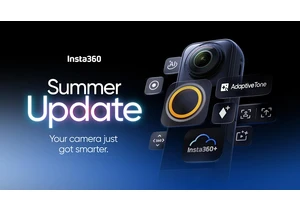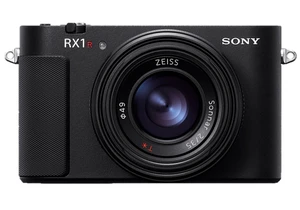I’ve found myself at a loss for words when trying to explain the Humane AI Pin to my friends. The best description so far is that it’s a combination of a wearable Siri button with a camera and built-in projector that beams onto your palm. But each time I start explaining that, I get so caught up in pointing out its problems that I never really get to fully detail what the AI Pin can do. Or is meant to do, anyway.
Yet, words are crucial to the Humane AI experience. Your primary mode of interacting with the pin is through voice, accompanied by touch and gestures. Without speaking, your options are severely limited. The company describes the device as your “second brain,” but the combination of holding out my hand to see the projected screen, waving it around to navigate the interface and tapping my chest and waiting for an answer all just made me look really stupid. When I remember that I was actually eager to spend $700 of my own money to get a Humane AI Pin, not to mention shell out the required $24 a month for the AI and the company’s 4G service riding on T-Mobile’s network, I feel even sillier.
What is the Humane AI Pin?
In the company’s own words, the Humane AI Pin is the “first wearable device and software platform built to harness the full power of artificial intelligence.” If that doesn’t clear it up, well, I can’t blame you.
There are basically two parts to the device: the Pin and its magnetic attachment. The Pin is the main piece, which houses a touch-sensitive panel on its face, with a projector, camera, mic and speakers lining its top edge. It’s about the same size as an Apple Watch Ultra 2, both measuring about 44mm (1.73 inches) across. The Humane wearable is slightly squatter, though, with its 47.5mm (1.87 inches) height compared to the Watch Ultra’s 49mm (1.92 inches). It’s also half the weight of Apple’s smartwatch, at 34.2 grams (1.2 ounces).
The top of the AI Pin is slightly thicker than the bottom, since it has to contain extra sensors and indicator lights, but it’s still about the same depth as the Watch Ultra 2. Snap on a magnetic attachment, and you add about 8mm (0.31 inches). There are a few accessories available, with the most useful being the included battery booster. You’ll get two battery boosters in the “complete system” when you buy the Humane AI Pin, as well as a charging cradle and case. The booster helps clip the AI Pin to your clothes while adding some extra hours of life to the device (in theory, anyway). It also brings an extra 20 grams (0.7 ounces) with it, but even including that the AI Pin is still 10 grams (0.35 ounces) lighter than the Watch Ultra 2.
That weight (or lack thereof) is important, since anything too heavy would drag down on your clothes, which would not only be uncomfortable but also block the Pin’s projector from functioning properly. If you're wearing it with a thinner fabric, by the way, you’ll have to use the latch accessory instead of the booster, which is a $40 plastic tile that provides no additional power. You can also get the stainless steel clip that Humane sells for $50 to stick it onto heavier materials or belts and backpacks. Whichever accessory you choose, though, you’ll place it on the underside of your garment and stick the Pin on the outside to connect the pieces.
How the AI Pin works
But you might not want to place the AI Pin on a bag, as you need to tap on it to ask a question or pull up the projected screen. Every interaction with the device begins with touching it, there is no wake word, so having it out of reach sucks.
Tap and hold on the touchpad, ask a question, then let go and wait a few seconds for the AI to answer. You can hold out your palm to read what it said, bringing your hand closer to and further from your chest to toggle through elements. To jump through individual cards and buttons, you’ll have to tilt your palm up or down, which can get in the way of seeing what’s on display. But more on that in a bit.
There are some built-in gestures offering shortcuts to functions like taking a picture or video or controlling music playback. Double tapping the Pin with two fingers will snap a shot, while double-tapping and holding at the end will trigger a 15-second video. Swiping up or down adjusts the device or Bluetooth headphone volume while the assistant is talking or when music is playing, too.
Each person who orders the Humane AI Pin will have to set up an account and go through onboarding on the website before the company will ship out their unit. Part of this process includes signing into your Google or Apple accounts to port over contacts, as well as watching a video that walks you through those gestures I described. Your Pin will arrive already linked to your account with its eSIM and phone number sorted. This likely simplifies things so users won’t have to fiddle with tedious steps like installing a SIM card or signing into their profiles. It felt a bit strange, but it’s a good thing because, as I’ll explain in a bit, trying to enter a password on the AI Pin is a real pain.
Talking to the Humane AI Pin
The easiest way to interact with the AI Pin is by talking to it. It’s supposed to feel natural, like you’re talking to a friend or assistant, and you shouldn’t have to feel forced when asking it for help. Unfortunately, that just wasn’t the case in my testing.
When the AI Pin did understand me and answer correctly, it usually took a few seconds to reply, in which time I could have already gotten the same results on my phone. For a few things, like adding items to my shopping list or converting Canadian dollars to USD, it performed adequately. But “adequate” seems to be the best case scenario.
Sometimes the answers were too long or irrelevant. When I asked “Should I watch Dream Scenario,” it said “Dream Scenario is a 2023 comedy/fantasy film featuring Nicolas Cage, with positive ratings on IMDb, Rotten Tomatoes and Metacritic. It’s available for streaming on platforms like YouTube, Hulu and Amazon Prime Video. If you enjoy comedy and fantasy genres, it may be worth watching.”
Setting aside the fact that the “answer” to my query came after a lot of preamble I found unnecessary, I also just didn’t find the recommendation satisfying. It wasn’t giving me a straight answer, which is understandable, but ultimately none of what it said felt different from scanning the top results of a Google search. I would have gleaned more info had I looked the film up on my phone, since I’d be able to see the actual Rotten Tomatoes and Metacritic scores.
To be fair, the AI Pin was smart enough to understand follow-ups like “How about The Witch” without needing me to repeat my original question. But it’s 2024; we’re way past assistants that need so much hand-holding.
We’re also past the days of needing to word our requests in specific ways for AI to understand us. Though Humane has said you can speak to the pin “naturally,” there are some instances when that just didn’t work. First, it occasionally misheard me, even in my quiet living room. When I asked “Would I like YouTuber Danny Gonzalez,” it thought I said “would I like YouTube do I need Gonzalez” and responded “It’s unclear if you would like Dulce Gonzalez as the content of their videos and channels is not specified.”
When I repeated myself by carefully saying “I meant Danny Gonzalez,” the AI Pin spouted back facts about the YouTuber’s life and work, but did not answer my original question.
That’s not as bad as the fact that when I tried to get the Pin to describe what was in front of me, it simply would not. Humane has a Vision feature in beta that’s meant to let the AI Pin use its camera to see and analyze things in view, but when I tried to get it to look at my messy kitchen island, nothing happened. I’d ask “What’s in front of me” or “What am I holding out in front of you” or “Describe what’s in front of me,” which is how I’d phrase this request naturally. I tried so many variations of this, including “What am I looking at” and “Is there an octopus in front of me,” to no avail. I even took a photo and asked “can you describe what’s in that picture.”
Every time, I was told “Your AI Pin is not sure what you’re referring to” or “This question is not related to AI Pin” or, in the case where I first took a picture, “Your AI Pin is unable to analyze images or describe them.” I was confused why this wasn’t working even after I double checked that I had opted in and enabled the feature, and finally realized after checking the reviewers' guide that I had to use prompts that started with the word “Look.”
Look, maybe everyone else would have instinctively used that phrasing. But if you’re like me and didn’t, you’ll probably give up and never use this feature again. Even after I learned how to properly phrase my Vision requests, they were still clunky as hell. It was never as easy as “Look for my socks” but required two-part sentences like “Look at my room and tell me if there are boots in it” or “Look at this thing and tell me how to use it.”
When I worded things just right, results were fairly impressive. It confirmed there was a “Lysol can on the top shelf of the shelving unit” and a “purple octopus on top of the brown cabinet.” I held out a cheek highlighter and asked what to do with it. The AI Pin accurately told me “The Carry On 2 cream by BYBI Beauty can be used to add a natural glow to skin,” among other things, although it never explicitly told me to apply it to my face. I asked it where an object I was holding came from, and it just said “The image is of a hand holding a bag of mini eggs. The bag is yellow with a purple label that says ‘mini eggs.’” Again, it didn't answer my actual question.
Humane’s AI, which is powered by a mix of OpenAI’s recent versions of GPT and other sources including its own models, just doesn’t feel fully baked. It’s like a robot pretending to be sentient — capable of indicating it sort of knows what I’m asking, but incapable of delivering a direct answer.
My issues with the AI Pin’s language model and features don’t end there. Sometimes it just refuses to do what I ask of it, like restart or shut down. Other times it does something entirely unexpected. When I said “Send a text message to Julian Chokkattu,” who’s a friend and fellow AI Pin reviewer over at Wired, I thought I’d be asked what I wanted to tell him. Instead, the device simply said OK and told me it sent the words “Hey Julian, just checking in. How's your day going?” to Chokkattu. I've never said anything like that to him in our years of friendship, but I guess technically the AI Pin did do what I asked.
Using the Humane AI Pin’s projector display
If only voice interactions were the worst thing about the Humane AI Pin, but the list of problems only starts there. I was most intrigued by the company’s “pioneering Laser Ink display” that projects green rays onto your palm, as well as the gestures that enabled interaction with “onscreen” elements. But my initial wonder quickly gave way to frustration and a dull ache in my shoulder. It might be tiring to hold up your phone to scroll through Instagram, but at least you can set that down on a table and continue browsing. With the AI Pin, if your arm is not up, you’re not seeing anything.
Then there’s the fact that it’s a pretty small canvas. I would see about seven lines of text each time, with about one to three words on each row depending on the length. This meant I had to hold my hand up even longer so I could wait for notifications to finish scrolling through. I also have a smaller palm than some other reviewers I saw while testing the AI Pin. Julian over at Wired has a larger hand and I was downright jealous when I saw he was able to fit the entire projection onto his palm, whereas the contents of my display would spill over onto my fingers, making things hard to read.
It’s not just those of us afflicted with tiny palms that will find the AI Pin tricky to see. Step outside and you’ll have a hard time reading the faint projection. Even on a cloudy, rainy day in New York City, I could barely make out the words on my hands.
When you can read what’s on the screen, interacting with it might make you want to rip your eyes out. Like I said, you’ll have to move your palm closer and further to your chest to select the right cards to enter your passcode. It’s a bit like dialing a rotary phone, with cards for individual digits from 0 to 9. Go further away to get to the higher numbers and the backspace button, and come back for the smaller ones.
This gesture is smart in theory but it’s very sensitive. There’s a very small range of usable space since there is only so far your hand can go, so the distance between each digit is fairly small. One wrong move and you’ll accidentally select something you didn’t want and have to go all the way out to delete it. To top it all off, moving my arm around while doing that causes the Pin to flop about, meaning the screen shakes on my palm, too. On average, unlocking my Pin, which involves entering a four-digit passcode, took me about five seconds.
On its own, this doesn’t sound so bad, but bear in mind that you’ll have to re-enter this each time you disconnect the Pin from the booster, latch or clip. It’s currently springtime in New York, which means I’m putting on and taking off my jacket over and over again. Every time I go inside or out, I move the Pin to a different layer and have to look like a confused long-sighted tourist reading my palm at various distances. It’s not fun.
Of course, you can turn off the setting that requires password entry each time you remove the Pin, but that’s simply not great for security.
Though Humane says “privacy and transparency are paramount with AI Pin,” by its very nature the device isn’t suitable for performing confidential tasks unless you’re alone. You don’t want to dictate a sensitive message to your accountant or partner in public, nor might you want to speak your Wi-Fi password out loud.
That latter is one of two input methods for setting up an internet connection, by the way. If you choose not to spell your Wi-Fi key out loud, then you can go to the Humane website to type in your network name (spell it out yourself, not look for one that’s available) and password to generate a QR code for the Pin to scan. Having to verbally relay alphanumeric characters to the Pin is not ideal, and though the QR code technically works, it just involves too much effort. It’s like giving someone a spork when they asked for a knife and fork: good enough to get by, but not a perfect replacement.
The Humane AI Pin’s speaker
Since communicating through speech is the easiest means of using the Pin, you’ll need to be verbal and have hearing. If you choose not to raise your hand to read the AI Pin’s responses, you’ll have to listen for it. The good news is, the onboard speaker is usually loud enough for most environments, and I only struggled to hear it on NYC streets with heavy traffic passing by. I never attempted to talk to it on the subway, however, nor did I obnoxiously play music from the device while I was outside.
In my office and gym, though, I did get the AI Pin to play some songs. The music sounded fine — I didn’t get thumping bass or particularly crisp vocals, but I could hear instruments and crooners easily. Compared to my iPhone 15 Pro Max, it’s a bit tinny, as expected, but not drastically worse.
The problem is there are, once again, some caveats. The most important of these is that at the moment, you can only use Tidal’s paid streaming service with the Pin. You’ll get 90 days free with your purchase, and then have to pay $11 a mo
Login to add comment
Other posts in this group


Insta360 has launched a firmware upgrade and new accessories for its X5 360

Sony just surprised the photography world by unveiling the RX1R III, a fixed-lens



Xbox has confirmed the second batch of Game

John Wick Hex, a stylish and
